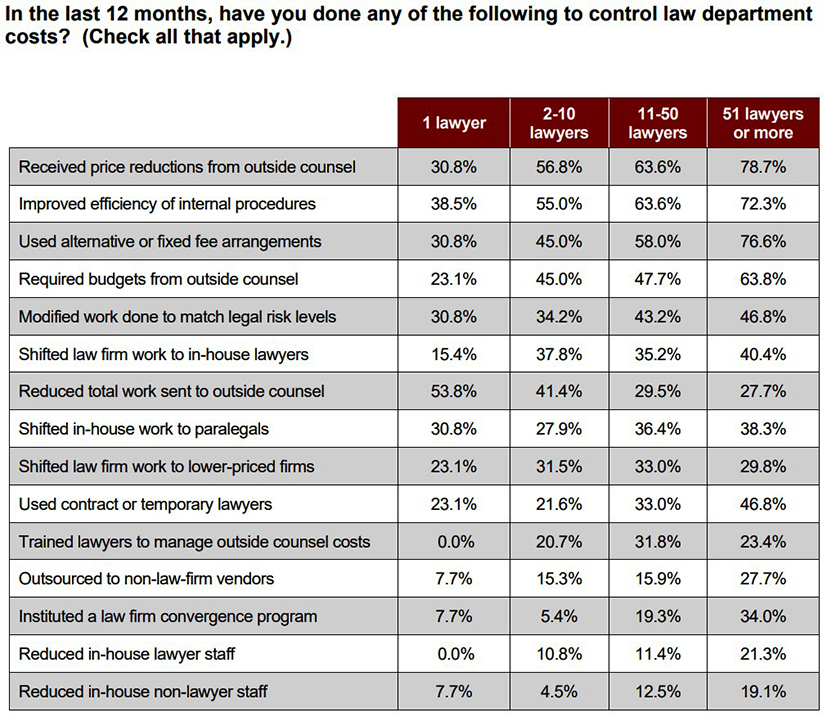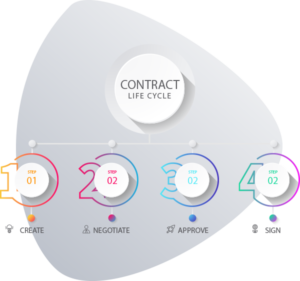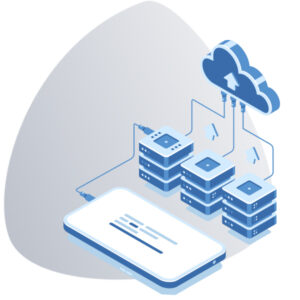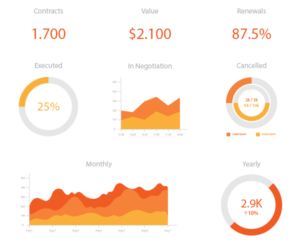Contract Management Software for Legal Departments
A definitive guide for In-house counsel

Target Audience: Legal departments searching for a contract management software.
Objectives: Require a unified system with case/matter management, contract management, and document management.
Challenges: Most systems offer standalone contract management, forcing legal departments to use separate systems for matter and contract management. Document management capabilities are minimal and require users to access multiple systems to manage the department.
Introduction
Contract management is one of the most important services delivered by in-house counsel. Both the C suite and the line view effective contract management as critical to strategic growth and risk management.
The great majority of organizations look to their legal departments to define and oversee the function, and to work with other parts of the organization to integrate policies, workflows, and technology into regular business operations.
According to the Gartner Group, 60% of all supplier contracts are automatically renewed without the knowledge of the buyer, due largely to the buyer failing to give notice of termination.
Contract management lends itself to automation, and there are number of software solutions on the market. We are not going to delve into the details of contract management as a process or best practices. Rather, we will focus on the key system features that may be used to enable them.

While it is somewhat easy, to sum up, high-level requirements in a few paragraphs, legal departments must take a practical approach to weighing pros and cons when evaluating contract management software.
Finding the right system for your organization requires an assessment of your needs and comparison to the range of features offered in different products.
We hope that by the time you finish this guide you will be better equipped to identify the right contract management solution based on your organization’s requirements.
So let’s get started!
What do legal departments want in contract software?

They will also empower a company to systematically manage its portfolio of agreements and to monitor and react timely to specific terms and conditions.
To effectively manage the contracting function, a legal department needs a system that is simple to use, integrates with other applications and helps it to stay on top of the contract workload.
We must emphasize ‘Simplicity’ because the ultimate goals in contract management are to speed up turnaround times and become more productive without requiring attorneys to turn themselves into software wizards.
Key features of a contract management software

User instructions should be incorporated into the templates and required information or clauses should be identified and controlled. The system should also allow users to attach all related documents and correspondence within the contract file/folder.
The systems should be able to handle multiple document formats including word processing files, spreadsheets, images and emails. After creation, the system should retain the new contract and subsequent revisions.
The system’s database should be able to pick up key metadata such as party names, addresses, contact details, and important dates from the user-created templates. This information will be critical to future contract administration, reporting and risk mitigation.
Workflow – Tasks like contract review and approval should be streamlined by automating communication flow and checklist tasks and by the systematic definition of roles and responsibilities.
Attorneys and business people should have the ability to quickly review agreements and issue approvals or request additional detail. The abilities to compare new contracts to templates and revisions by version is critical.

The system and its content should be auditable and support QA requirements. Standard management reports and action items should be automatically generated and forwarded to appropriate personnel.
System users and administrators should be able to review and report on contracts individually and in batch. In-house counsel should be able to generate all but the most complex reports related to contracts with a few clicks.
Should you use stand-alone tools to manage contracts?
Users and IT struggle when a group of disjointed systems must be modified and maintained in order to work together. Legal department users do not want to have separate systems for contract management, matter management, messaging, desktop productivity and document management. Costs increase quickly, productivity is reduced and maintenance becomes cumbersome.

The digital era has evolved to the point where integrated enterprise systems are now available for a wide assortment of applications. The in-house legal function has been a beneficiary of this kind of system development and integration.
Native integration of legal and business applications enhances software usability and productivity. It also limits the risk of miscommunication, inconsistency and error.
When it comes to the legal and business applications used in contract management, your entire system should run like a well-oiled machine without the need to open and close multiple windows and applications. Do we need to say more?
A) Compatibility with matter management
Matter management systems are used by in-house legal teams to track departmental activity. We will discuss matter management in more detail in another guide.
Since contract management is such a critical and proportionately large part of the in-house legal function, an ideal solution should provide the ability to create and manage matters and contracts under one umbrella.
Integrating these applications means contract detail can be incorporated into matter management reports and vice versa.
B) Incorporating document management

Contract management systems are a specialized type of DMS. Integrating a contract management system with a DMS, allows the former to take advantage of the extensive feature sets that have been developed for the latter.
We will address document management technology in more detail later in this article.
C) Compatibility with Microsoft Office 365 and email
Wouldn’t it be nice for your attorneys to work on legal management, productivity and messaging applications all from one unified desktop? This is where Microsoft enters the equation. US businesses use Microsoft’s Office more than any other application.
The cloud-based Office365 and the on-premises Office 2019 are highly integrated application suites that include some of the most feature-laden desktop productivity and messaging tools available. The better contract management systems are tightly integrated with Microsoft Word, Excel, PowerPoint and Outlook/Exchange.
The same can be said for the better matter and document management systems.
D) What about electronic signature?

The company’s software allows parties to sign agreements online. Adobe Sign and DocuSign electronic signatures are legally acceptable in all jurisdictions within United States.
Legal departments are leveraging this technology to speed up the contract execution process.
Adobe Sign provides an automated workflow system between parties to obtain e-signatures for contracts. It is highly-advisable and efficient for an organization to integrate its contract management system with an e-signature system such as Adobe Sign.
Please click on the button to evaluate your needs for a Contract Management Software
Why vendor platform is critical?

The gating decision here is whether to work with a vendor that offers software solutions built on open-source or industry-standard platforms (such as Microsoft, Oracle or Google technologies), or a vendor that offers proprietary or closed solutions.
Buyers of contract management systems tend to prefer the former. Working with widely-used technologies reduces the risk of being orphaned with an unsupported platform.
The selected system can also be highly compatible with other applications (e.g. for word processing, document management, messaging, electronic signature, workflow management).
Proprietary vendors often offer task-specific integration options with tools like Microsoft’s. Legal department buyers should assess whether these integrations are clunky, tend to fall apart with new upgrades or present the risk that the buyer may be stranded with an unsupported platform.
Will customization be needed?
Another important element to consider in a contract management system is the potential for customization. A good system should be highly customizable. Some systems accommodate a basic level of customization by allowing the buyer to create a few user-defined fields.
The better systems are so flexible that you can even instill your own business logic via programming to accommodate highly specialized buyer needs.
How the contract life cycle is handled?

Most systems come with predefined processes built into their logic.
A buyer must assess whether these out-of-the-box processes will work for its organization and whether the program logic is rigid or flexible. The bottom line is that the system should be highly adaptable, even before any customization of code is required.
Importance of global search

You would be surprised to learn how often, the top-selling contract management vendors fail to provide even the most basic search functionality. Your contract management system should be efficient enough to quickly locate records by using different types of criteria or search terms.
This type of functionality is called Global Search. The better global search features are sophisticated enough, that typing the first few letters of a term or file number will narrow down the filtered results within milliseconds.
Results can be achieved by using metadata fields (e.g. file name, the attorney assigned, date, company), or by searching against the full content of the contract management system.
Document management systems in contracting

A document is the nucleus of contract management. Legal Department staff can waste a good amount of valuable time while searching for, formatting, saving and managing documents.
You should keep this in mind when prioritizing your system requirements. Contract management software should allow you to quickly and easily generate contracts by re-using content and leveraging features such as the Word mail merge capability and form development options.
This level of functionality and integration is built into most DMS applications. Users can create templates that auto-populate data elements (e.g. party names, dates, addresses) throughout a document and generate output in industry-standard Word or PDF format.
A) Sharing documents without emailing

When a DMS is integrated into the contract management system, you no longer need to send and receive rounds of emails with attachments. The documents will be stored in the DMS’s central repository where they can be shared by the system users.
The DMS can also be configured to share documents with outside parties. For example, you may want to upload a contract during the review process with a vendor or an employee recruit.
Both in-house counsel and the outside party will be able to review and make changes as per pre-defined roles assigned by the system administrator. Contracts can be finalized online, completely eliminating the need for emails and attachments.
B) Benefits of integrated Document Management

Controls allow you to easily review, switch or compare document edits, saving time and avoiding the confusion that occurs when emailing back and forth.
The DMS will also retain an authenticable version of the final document with an audit trail in case of future confusion or disputes.
The integration will also enhance searching. Users can search across the entire document repository. For example, a paralegal might search for all documents with the phrase ‘cease and desist’.
A good document management system will return all searchable documents (i.e. those that actually contain searchable text) in which that particular phrase occurs.
The search will work across multiple document types, including PDF, Word, Excel, and PowerPoint files. Better DMS systems will have extended features like wildcard operators, stemming and proximity searching.
How secure is an online contract management system?

The company has invested heavily in cyber-security. It spends millions of dollars to ensure that users of its applications and platforms can conduct business securely and reliably. Microsoft uses state of the art encryption and advanced security layers.
It follows certified policies and procedures and employs thousands of security professionals. Vendors that offer software solutions based on the Microsoft platform are able to provide highly securable environments.
Given the current business and regulatory climate, your contract management system assessment should include a detailed review of security criteria.
The vendors under review should be able to provide you with thorough documentation of their digital and physical security layers. It is not unreasonable to ask for a security audit before signing a contract with the vendor. Finally – get help from corporate or external security experts when needed.
Benefits of cloud-based contract management

The following are some of the benefits of an online contract management system:
♦ There is no server maintenance involved
♦ The SaaS provider will provide system administration and maintenance services
♦ Systems can be implemented quickly
♦ Cloud systems do not require an upfront investment in infrastructure
♦ The need to recruit or train specialists is minimized
♦ The system can be accessed remotely, or configured for access from only specified locations or devices
♦ High levels of reliability can be achieved (e.g. 99.9% uptime)
♦ Speed and performance can be highly optimized
♦ Software, hardware and security updates can be automated
♦ World-class security is available, comparable to online banking security
♦ Technologically advanced online systems can be integrated with Office 365 online
♦ Security can be robust (see the Microsoft example above)
Contract related Analysis via reports/dashboards:

More advanced dash-boarding systems will allow users to drill down from summary to detail level information.
How long does it take to implement contract systems?
Contract management systems should not take long to implement. Many systems can be implemented within a matter of a few days.
For example, it is our experience that contract and matter management systems are typically implemented successfully for a staff of 10 users in less than a week.
Conclusion
We hope you find this information useful and that this article has played a role in helping you select the right system for your legal department.




